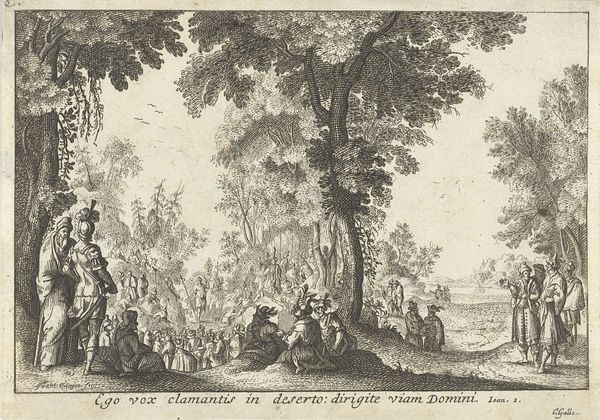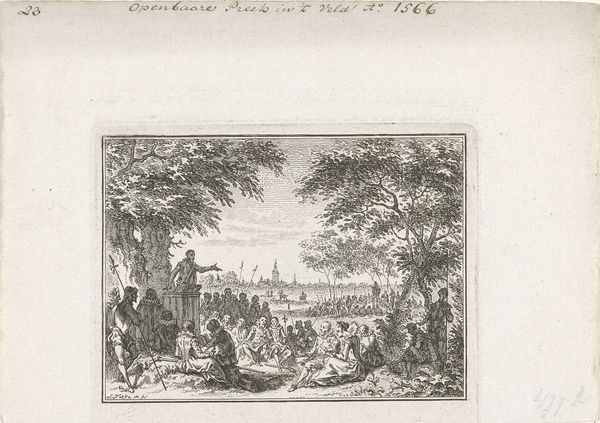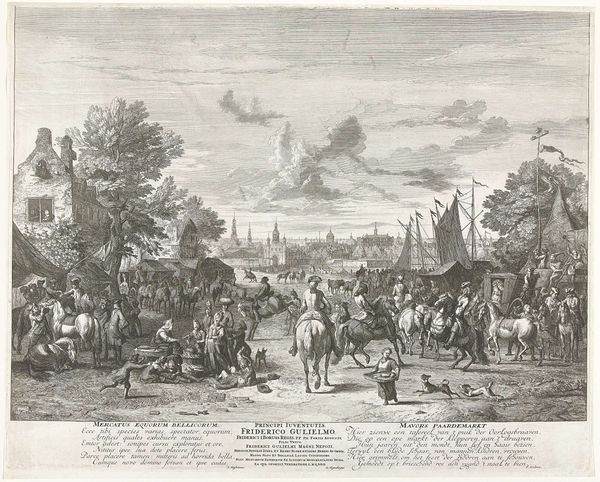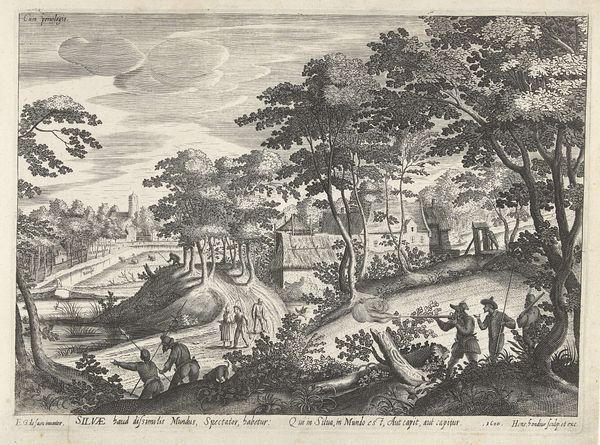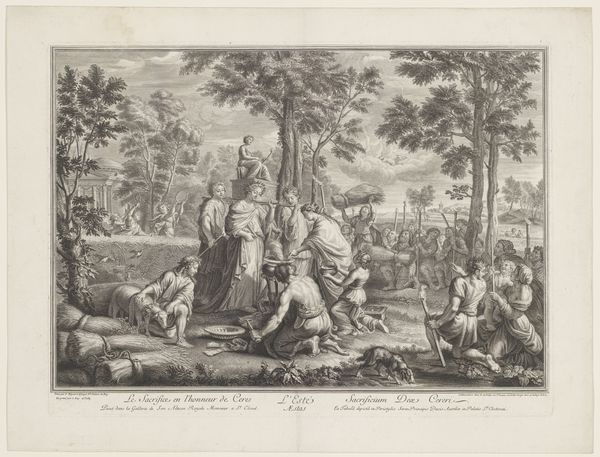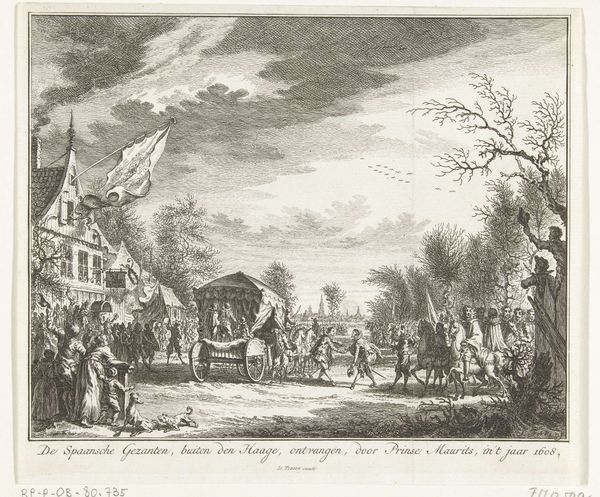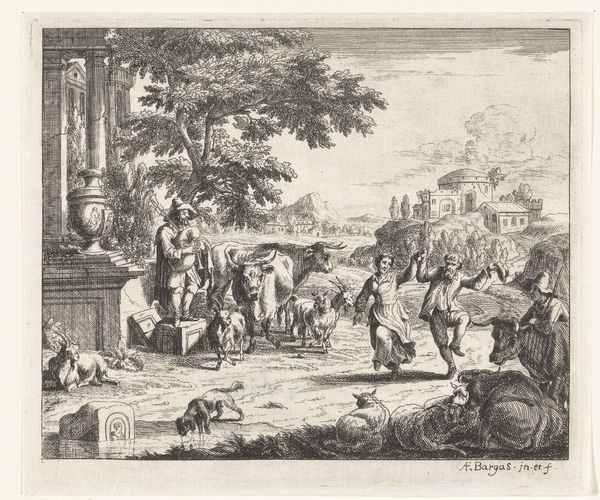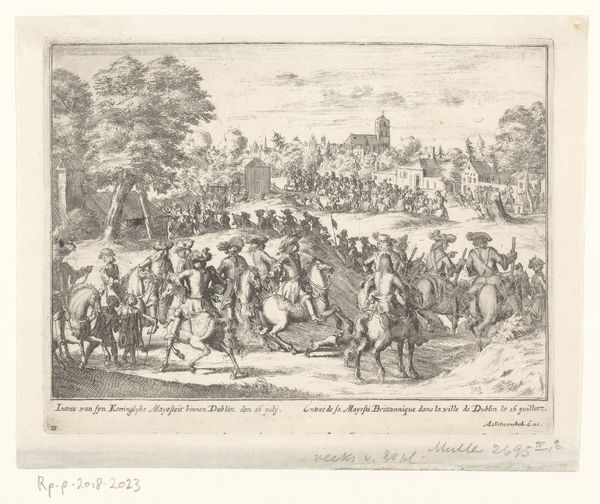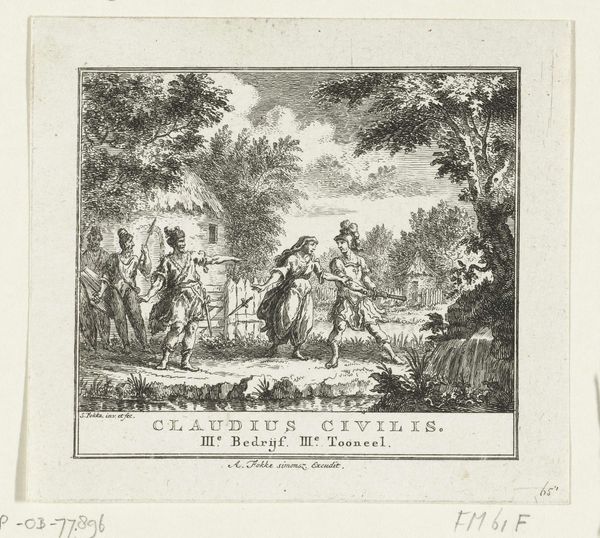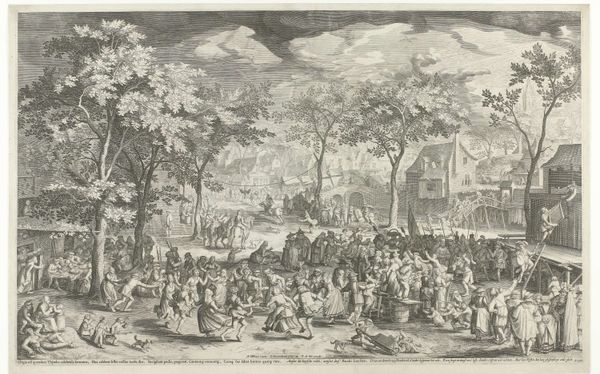
Dimensions: height 425 mm, width 545 mm
Copyright: Rijks Museum: Open Domain
Curator: Looking at this print, made by Cornelis Brouwer in 1791, depicting the "Attack on the city of Weesp, 30 September 1787", the first thing that strikes me is the intense activity, despite the relatively small scale. It almost feels like a cinematic moment captured in meticulous detail. Editor: Yes, there's an undeniable sense of action. But I think it's important to understand this image as part of a broader political landscape. This wasn’t just any skirmish; it was a clash between the Patriot and Orangist factions in the Netherlands, a struggle with implications for class, governance, and the burgeoning democratic ideals spreading across Europe and the Americas. Curator: Absolutely. It is also interesting to note the social stratification in the depiction. While the text details troops, one gets a very broad sense of the composition of an army - or at least what one was at the time in that region. The print itself offers us a very interesting perspective. One can analyse in detail each member that compounds the city's defense force and each member's social status can easily be dissected with what one sees depicted in this work. Editor: Precisely. Consider how Brouwer chooses to represent these "Patriot" forces. Are they romanticized, are their motivations purely ideological? This artwork provides us with insight into the ways these socio-political events were received at the time, and the ways that collective trauma or pride might find itself materialised through art. What narratives is Brouwer constructing, and for what audience? Who benefited from this particular representation of the conflict, both at the time and since? These questions, situated at the crossroads of history and visual culture, bring such valuable clarity to these pieces. Curator: A fascinating point, and one which really underscores the vital importance of seeing art within its social, institutional and indeed, ideological context. I suppose it’s difficult for a casual observer, even centuries later, to fully grasp the stakes embedded in this single, frozen moment. The role of art in constructing our collective memory... Editor: Exactly. The details aren't just aesthetic; they're infused with social meaning. They can lead to crucial discoveries. Curator: It definitely gives a new lens through which to consider artworks like Brouwer's “Attack on the City of Weesp”, as active participants in constructing narratives about nation, identity, and conflict. Editor: And challenges our current perceptions as well.
Comments
No comments
Be the first to comment and join the conversation on the ultimate creative platform.


